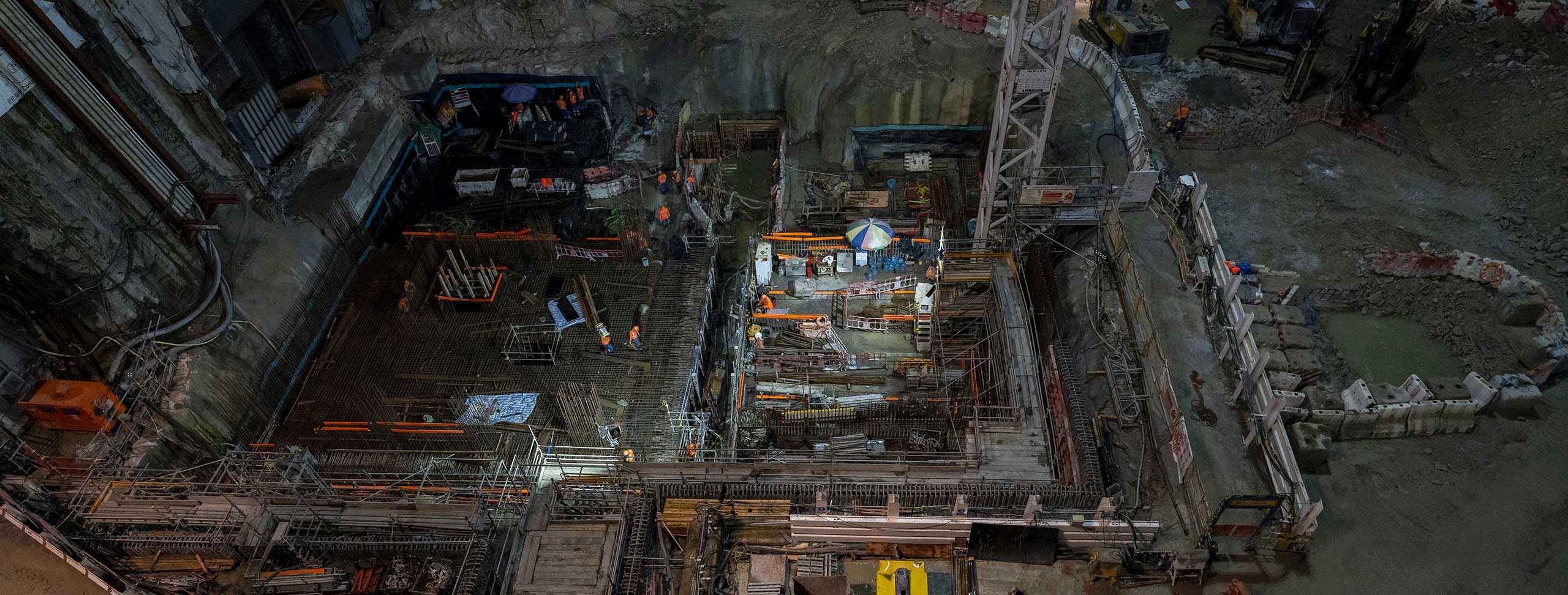
Dragages against the elements
HONG KONG
Pandemic, lockdowns, unstable weather, new competitors… the challenges have come one after another for Dragages Hong Kong’s employees. But through it all, the Bouygues Construction subsidiary, established here some seventy years ago, has been able to count on its resilient and committed staff as well as state-of the-art technologies that together make it a leading company for high standards construction projects in the region.
[1] A subsidiary co-managed by Bouygues Travaux Publics and Bouygues Bâtiment International.
By Laura Franchet
Metal versus quartz
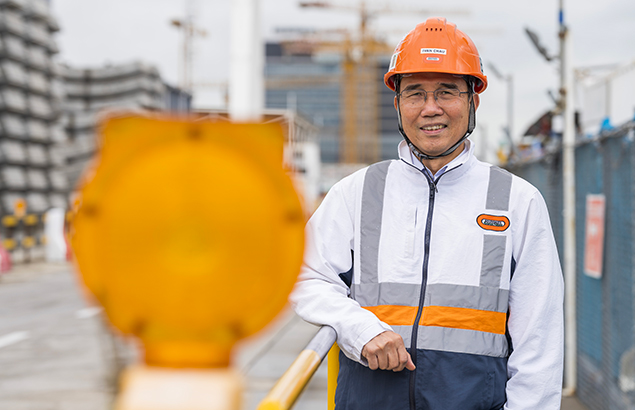
“This underground route will reduce driving time from 65 to 12 minutes at rush hour.” This huge undertaking begins at the location of the former maintenance hangars at Kai Tak airport, where Dragages Hong Kong carried out several major projects between the 1950s and 2010s.
Grinding away at a depth of 50 meters, in relative pressure of 5 bar, the tunnel boring machine (TBM) Rhea is excavating one of the two 2.4-km undersea tubes of the T2 tunnel. “The route of the tunnel under the sea requires digging under high pressure because there is very little earth above it,” explains operations director Étienne Baranger. “In addition, there is little fracturing in the granite at Hong Kong, and it contains a lot of quartz, an abrasive mineral for metal.” To deal with this complex geology and high-pressure environment, Dragages Hong Kong has chosen to rely again on Rhea and Victoria, the same two TBMs that dug the Tuen Mun-Chek Lap Kok undersea road tunnel, which was delivered in 2020. The cutterheads have been changed, however; measuring 14 meters in diameter and weighing 500 tons, they are fitted with 72 disc cutters, the tools that chew through the earth. “The disc cutters are housed in cylinders to shield them from the pressure,” explains Armin Sidali, a specialized hyperbar professional. “They can be changed directly in the cutterhead air lock by the maintenance technicians rather than by divers working in high pressure outside the TBM.”
We are building the T2 tunnel on a new road that will connect the western part of Kowloon to the Tseng Kwan O district
project director
50
meters depth
2.4 km
undersea tubes
I have seen the sector transformed by Bouygues’ innovations
TBM works director and former hyperbar diver
72
disc cutters
22
evacuation branches
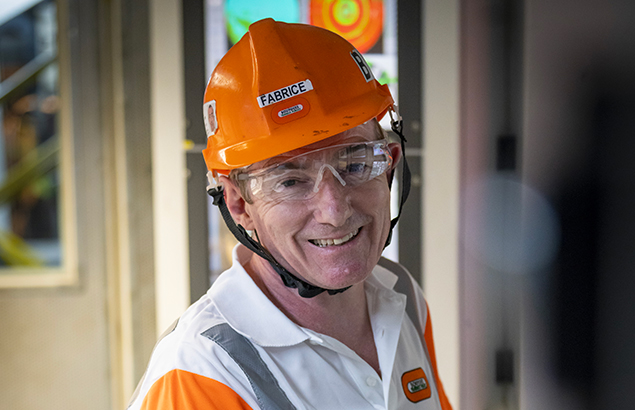
Fabrice Delporte, TBM works director and former hyperbar diver, has worked for Bouygues Construction since 1992 in underground projects (the Groene Hart tunnel, the Sydney metro, and Line 14 of the Paris metro): “I have seen the sector transformed by Bouygues’ introduction of several innovations such as the Mobydic system, which tracks wear on the cutter discs in real time so they can be replaced when necessary.” Another remarkable innovation in this project is the use of two robots to roughen the surface of the concrete inside the tunnel. At the other end of the alignment, the TBM Victoria is excavating the second tube of the tunnel. The two tubes will be connected by 22 evacuation branches. These “mini tunnels” are constructed at the same time as the main tubes using a very small TBM, which cut through the concrete lining erected by the large TBMs and installs reinforced concrete cylinders between the tubes. A technically difficult operation already performed successfully in the construction of the Tuen Mun-Chek Lap Kok tunnel.
Above ground is found the impressive logistics platform for the T2 tunnel. Located near Cha Kwo Ling, a village of some 300 inhabitants, the facility operates round the clock, seven days a week. This is also where the ventilation building for the tunnel is being constructed. The intense activity here is in stark contrast to the calm at the nearby temple of Yau Ma Tei Tin Hau, where workers come to pray for protection and good luck. An example of the paradoxes typical of Hong Kong.
[1] A subsidiary co-managed by Bouygues Travaux Publics and Bouygues Bâtiment International.
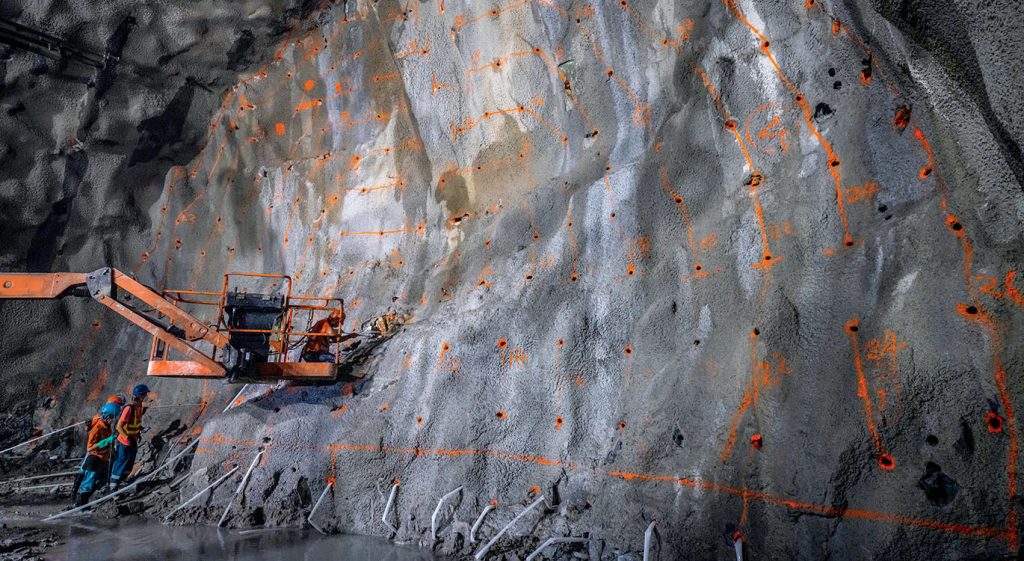
typhon warning
It was action stations this November morning on the Central Kowloon Route project. A category 3 typhoon, rare at this time of year, is battering the city. Rain pounds down on the worksite, complicating work on the tunnel for the Dragages Hong Kong teams. What is most urgent is ensuring the workers’ safety and protecting the equipment. The storm will reach category 8 (out of 10) the following day, forcing a halt in the work for several hours and changes in the planning. The workers are used to these unstable weather conditions and know how to deal with them. Meanwhile, 100 meters underground, works goes on for the time being. Some 450 men are digging, installing rebar, and pouring concrete in the numerous galleries forming what resembles an enormous anthill.
“The tunneling method employed here is drilling and blasting,” explains production director Alain Fievez. “We are working on six faces with six Jumbos, machines equipped with drilling arms that bore holes in the rock in which explosives are inserted.” These operations require great care – there is no room for error. Three metro lines run underground above the worksite, and on the surface lies a city with more than two million inhabitants, the most densely populated area of Hong Kong. “The tunnel, which is 4.7 kilometers long, will contain three traffic lanes,” says project director Ka Leung Lee. “Ultimately, the Central Kowloon Route will facilitate driving in the residential district of Yau Ma Tei as well as support new development projects in the region and improve air quality and safety for residents.“
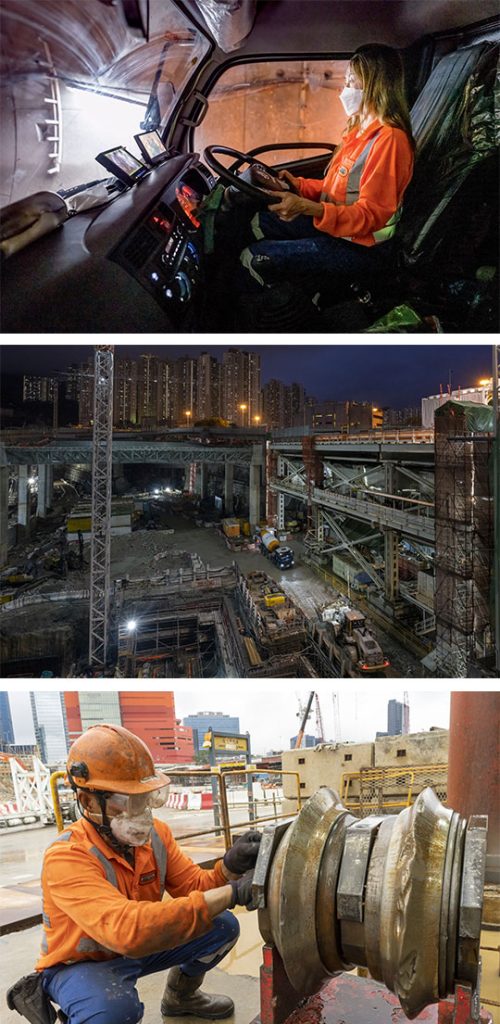

The tunnel, which is 4.7 kilometers long, will contain three traffic lanes.Ultimately, the Central Kowloon Route will facilitate driving in the residential district of Yau Ma Tei
project director
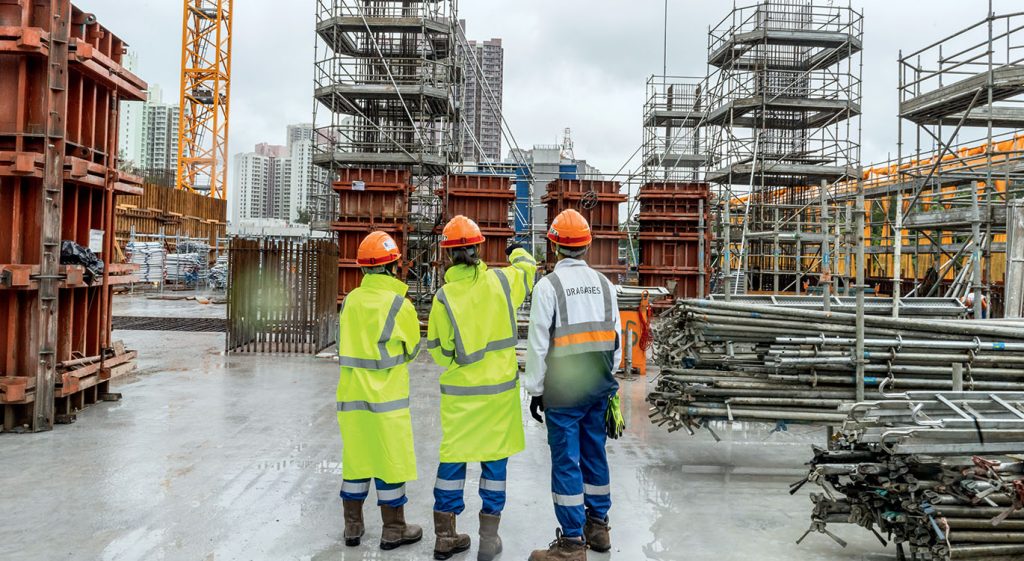
Destination Lantau Island
On venturing out from the bustling urban center of Hong Kong, one discovers islands covered with lush vegetation. Between two mountains on northern Lantau Island, near Chek Lap Kok International Airport, the Bouygues Construction subsidiary is constructing an impressive six-story building. “We were contracted to design and build a support services center for a nearby hospital. We began work in November 2020. The building, which has a total area of 54,000 sq. meters, will house a laundry, kitchen, and data facilities as well as emergency services,” says Paul Liu. The operations director of building projects at Dragages Hong Kong, Liu is also supervising the construction of four other buildings in the territory: a sports center, an innovation laboratory, a postal center, and a fire house with an adjoining ambulance garage. In the fire house project, 83 percent of the superstructure will be built using modular construction, a first for Dragages Hong Kong.
These recent contracts, most awarded by Hong Kong’s Architectural Services Department, point to the surge in the company’s activity in the building construction market, which has coincided with the Covid-19 pandemic. “We were awarded six projects in a space of three years, and we have set up a special department with 20 people to do the design work,” says Abigail Tam, an architect and the department’s deputy director. “We are very interested in doing environmental assessments of our projects according to the international BREEAM certification,” adds Tam. “It evaluates several criteria, including materials recycling, water use, and reduction of the distances materials must travel.”

We were awarded six projects in a space of three years, and we have set up a special department with 20 people to do the design work
architect and the department’s deputy director
The teams at Dragages Hong Kong have demonstrated their tenacity and capacity to adjust and overcome obstacles by relying on know-how established over a period of some 70 years.